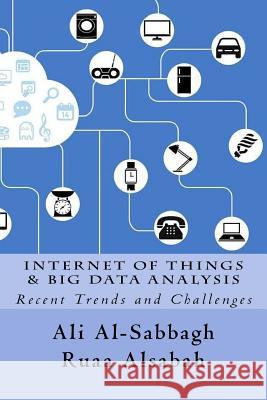Internet of Things and Big Data Analysis: Recent Trends and Challenges » książka
Internet of Things and Big Data Analysis: Recent Trends and Challenges
ISBN-13: 9780692809921 / Angielski / Miękka / 2016 / 298 str.
Chapter One: Overview of Internet of Things (IoT): This chapter describes the definition of IoT. The term Internet of Things (IoT) or Internet of Everything (IoE) is still ambiguous. There is no single unified definition of what it really is. However, it can be defined by elaborating what it can provide. The Internet of Things is thought to be the next evolution of the Internet as it provides a networking infrastructure allowing for trillions of devices to collect data and communicate with each other to make processed smart decisions. Chapter Two: Challenges and Applications of (IoT): This chapter discusses some of the major IoT applications that have the potential to bring transformation in our future trends. The rapid development of these applications is expected to face numerous challenges. This chapter brings key challenges into focus and discusses potential barriers that could impede the rapid adoption of IoT. Chapter Three: Explosion of Data (Big Data): This chapter elaborates on data management, which requires the process of transferring data in an efficient way, upon the user's demand. Therefore, the right data must reach the right user at the right time, in order to be valuable. Data comes from many different sources, i.e. web apps, sensor networks and many others. This data needs to be collected, categorized, stored, and analyzed in order to get an insight of its content and hence present it in an efficient way. Chapter Four: Boosted Prediction Analysis for Big Data: Prediction techniques represent a useful tool for knowledge discovery in a massive and complex healthcare dataset. In this chapter, a prediction model has been designed and implemented which analyzes medical records of patients and provides information for decision making in health institutes. The proposed model consists of three primary stages, the first being preprocessing data that focuses on preparing the information for the mining process. Chapter Five: IoT Security: This chapter outlines existing security approaches being used for IoT, together with the weaknesses they inherit. Since the security of IoT communications could be addressed in the context of the communication protocol itself, we focus on existing protocols and mechanisms used to secure communications involved in this vital subject. Chapter Six: Threat Taxonomy for Cloud of Things: In this chapter we present a comprehensive threat model which is then utilized to create a first-ever threat taxonomy for the Cloud of Things. This taxonomy outlines different security and privacy threats faced by this nascent technology and can be used as the basis for further research on security and privacy in the Cloud of Things. Chapter Seven: Smart Homes Based On Smart Cities' Design Patterns: This chapter reviews smart cities for the Internet of Things. It discusses maximizing the efficiency of distribution and consumption of energy from one point of view and a vision for smart cities in the future from another point of view. Moreover, it presents the design for a smart home and ends up with a proposed system, as a case study. Chapter Eight: Social-Sensor Networks: This chapter deals with the integration of Wireless Sensor Networks (WSNs) and Social Networks. Nowadays, WSNs have caused a paradigm shift in our society. They have become a popular mean of communication among people. Many aspects of our lives are significantly related to the WSNs, such as communication, transportation, military, and agriculture. Chapter Nine: 5G Driving Global IoT: This chapter explores the IoT literature in terms of the communication technology involved: 4G-LTE-A. Additionally, an outline for improving the IoT of future keys in current cellular systems is discussed. This work exhibits how the current 4G LTE-A frameworks can contribute to the design of smart cities. Furthermore, an overview of 4G and 5G is presented.











